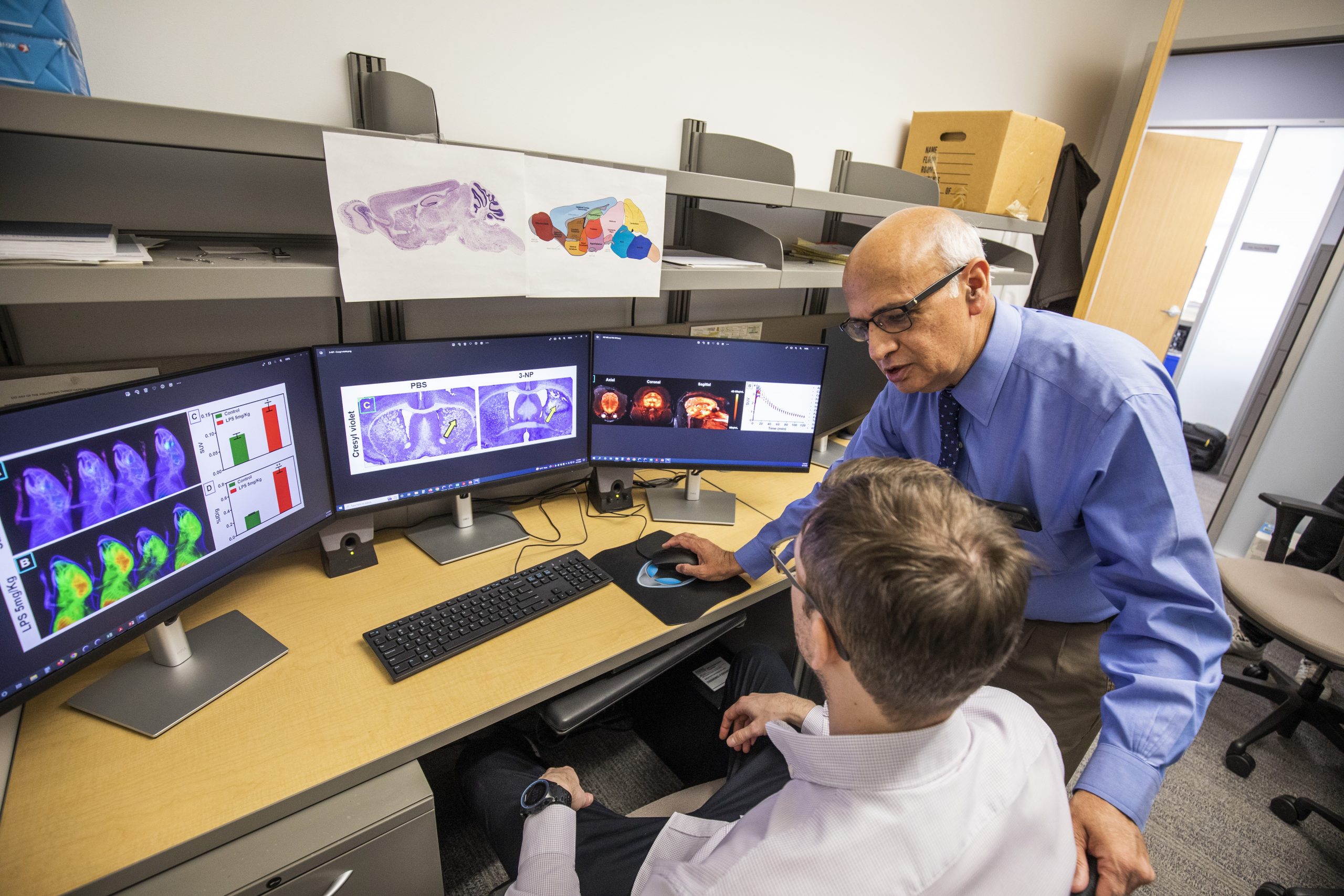Mallinckrodt Institute of Radiology (MIR) is now home to a multidisciplinary initiative to train the next generation of PET molecular imaging scientists. Translational Imaging in Radiopharmaceutical Sciences (TIRS) is a T32 postdoctoral training program funded by the National Institute on Aging. TIRS aims to train scientists to design, develop and translate diagnostic agents for probing different biomarkers mediating pathogenesis of neurodegenerative diseases, including Alzheimer’s disease and related dementias.
Thirteen departments across Washington University in St. Louis and the School of Medicine have committed to the cause, bringing together leading scientists from the radiological sciences division of MIR, Knight Alzheimer’s Disease Research Center, Molecular Imaging Center, Institute of Clinical and Translational Sciences, Cyclotron Facility and PET Radiotracer Translation and Resource Center on a single platform to train PET molecular imaging scientists. Vijay Sharma, PhD, professor of radiology, is the principal investigator of the T32 grant and co-directs the program with Tammie L.S. Benzinger, MD, PhD, professor of radiology, and Zhude (Will) Tu, PhD, professor of radiology.
“I cannot think of a better place than MIR to launch this program,” says Sharma, noting MIR’s standing at the forefront of translational research. The idea for a dedicated radiopharmaceutical postdoctoral training program was conceived after a discussion about the nationwide workforce shortage of radiochemists and its impact on health-care science. Sharma wanted to build a training program geared toward PET radiopharmaceuticals, from conception to the development and ultimate translation into the clinic. He sees it as a crucial bridge in addressing the immediate need for molecular imaging scientists, as well as a possible long-term imaging workforce pipeline, thus ultimately preparing trainees for faculty positions in diagnostic nuclear medicine and in neuroscience.
Recruitment of the first cohort of trainees is already underway. The program will have three postdoctoral trainees each year, with each trainee enrolled for two years over the five-year T32 grant. All trainees are provided multidisciplinary dual mentorship (one mentor in basic science and one physician-scientist), with mentors ranging from chemists to immunologists, neurologists to radiologists.
Sharma initially had 30 colleagues in mind to serve as program mentors; by the time he submitted the grant, 60 faculty members had committed to join the T32 TIRS program. He notes that the willingness of his peers and various departments to commit to this effort highlights both the need for this type of program and the university’s collaborative culture.
Published in Focal Spot Fall/Winter 2022 Issue

